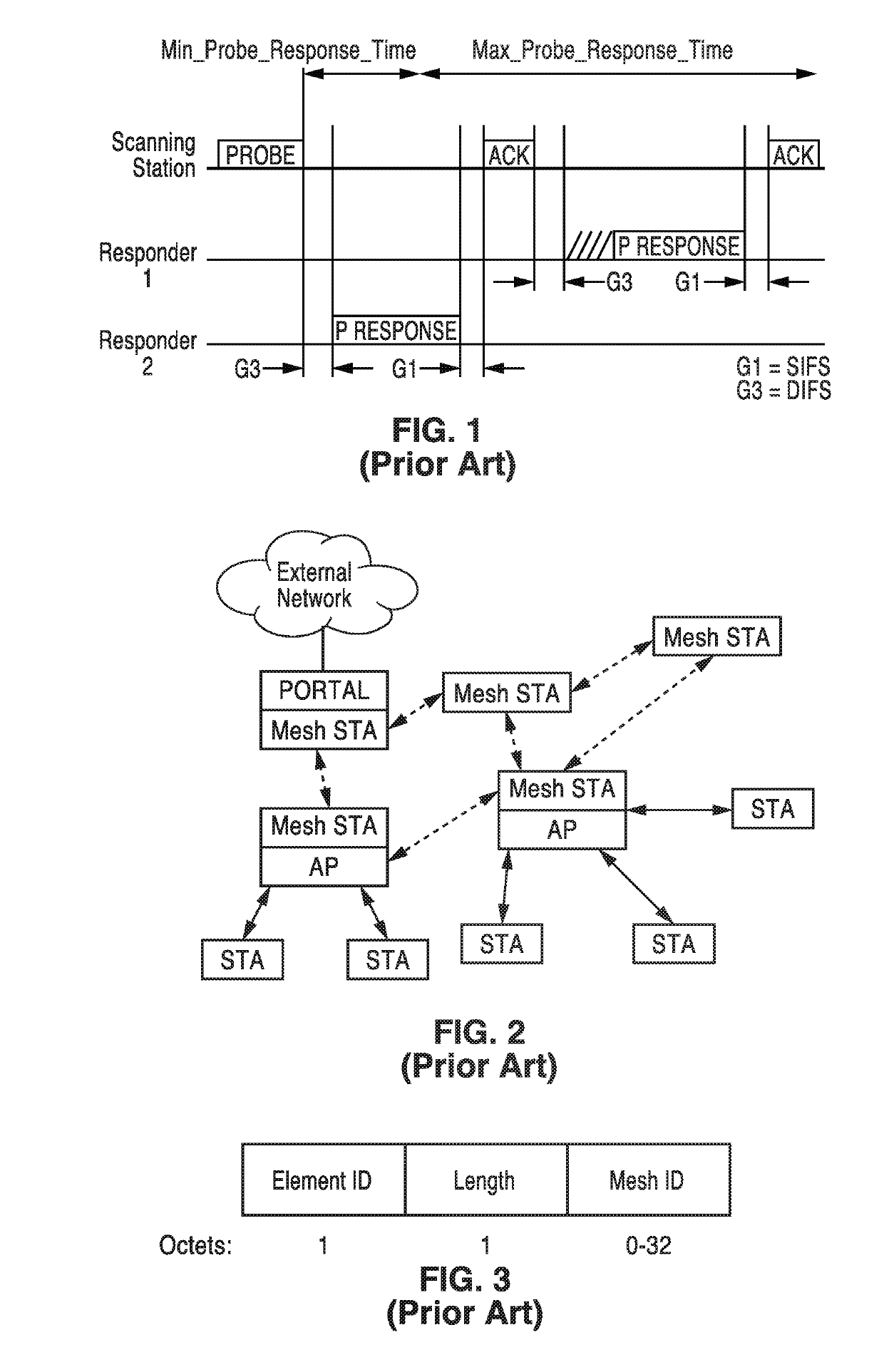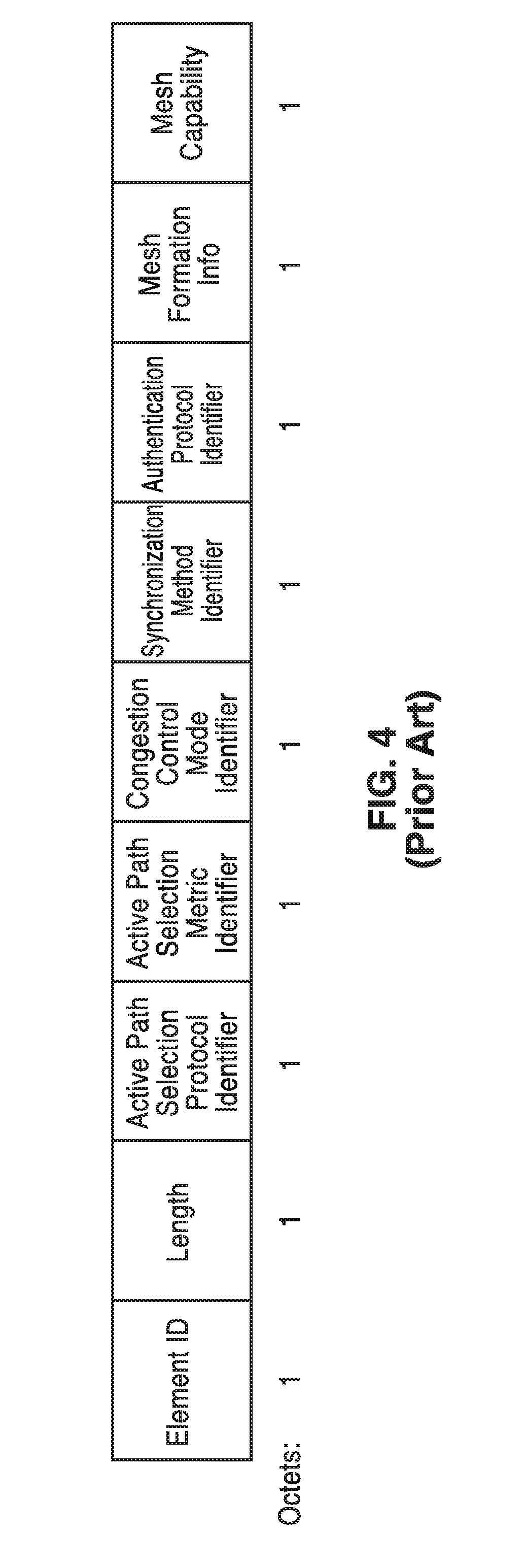Adaptive network discovery signaling
- Summary
- Abstract
- Description
- Claims
- Application Information
AI Technical Summary
Benefits of technology
Problems solved by technology
Method used
Image
Examples
case 1
3.3.1. Distributed Management (Case 1)
[0122]FIG. 16A and FIG. 16B illustrates an example embodiment 130 of overall information exchange among STAs according to a distributed management case according to the present disclosure. In the figure are seen multiple stations 132 in the network, which in this case are depicted as STA-B 134, STA-A 136, STA-6138, STA-5140, STA-3142 and STA-1144. In this section, overall signal flow among STAs are explained. In this example detection of a new STA is the trigger event. It is possible that other types of events can trigger the overall process as explained below.
[0123]With a distributed management procedure, STAs will make autonomous decisions exchanging events that each STA detected and actions that each STAs made. STA-1, STA-3, STA-5, and STA-6 are STAs which were depicted in FIG. 13, and they are transmitting discovery signals, for example beacon frames. STA-A is a new STA that is not a part of the network yet. STA-A 136 shows up at the entranc...
case 2
3.3.2. Centralized Management (Case 2)
[0126]FIG. 17 illustrates an example embodiment 210 of overall information exchange among STAs (STA-A 212, STA-6214, Central Server via STA-2216, STA-1218, STA-3220, and STA-4222), according to a centralized management case according to the present disclosure.
[0127]Similar to the description in the prior section, the network detection of a new STA is considered the trigger event for this example. It should be appreciated, however, that the present disclosure also teaches that other types of events can be utilized to trigger the overall process as later described.
[0128]With a centralized management procedure, STAs report Event Data to a Central Server in the network. In this particular scenario, it is assumed for the sake of example that the Central Server is accessible from STA2 which has a gateway to an external network. Upon reception of the Event Data, the Central Server maintains its database to track events which have occurred on the networ...
PUM
 Login to view more
Login to view more Abstract
Description
Claims
Application Information
 Login to view more
Login to view more - R&D Engineer
- R&D Manager
- IP Professional
- Industry Leading Data Capabilities
- Powerful AI technology
- Patent DNA Extraction
Browse by: Latest US Patents, China's latest patents, Technical Efficacy Thesaurus, Application Domain, Technology Topic.
© 2024 PatSnap. All rights reserved.Legal|Privacy policy|Modern Slavery Act Transparency Statement|Sitemap



